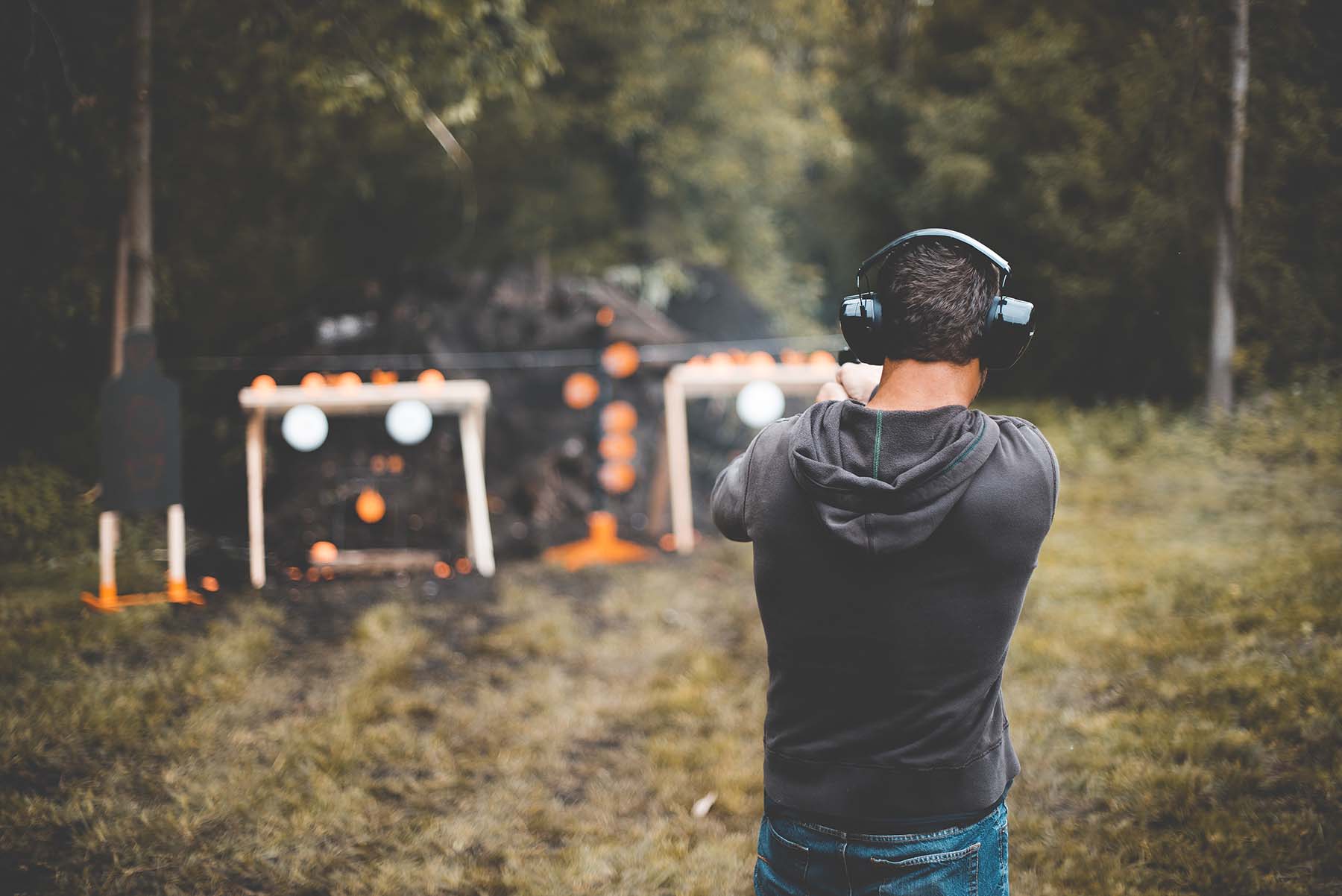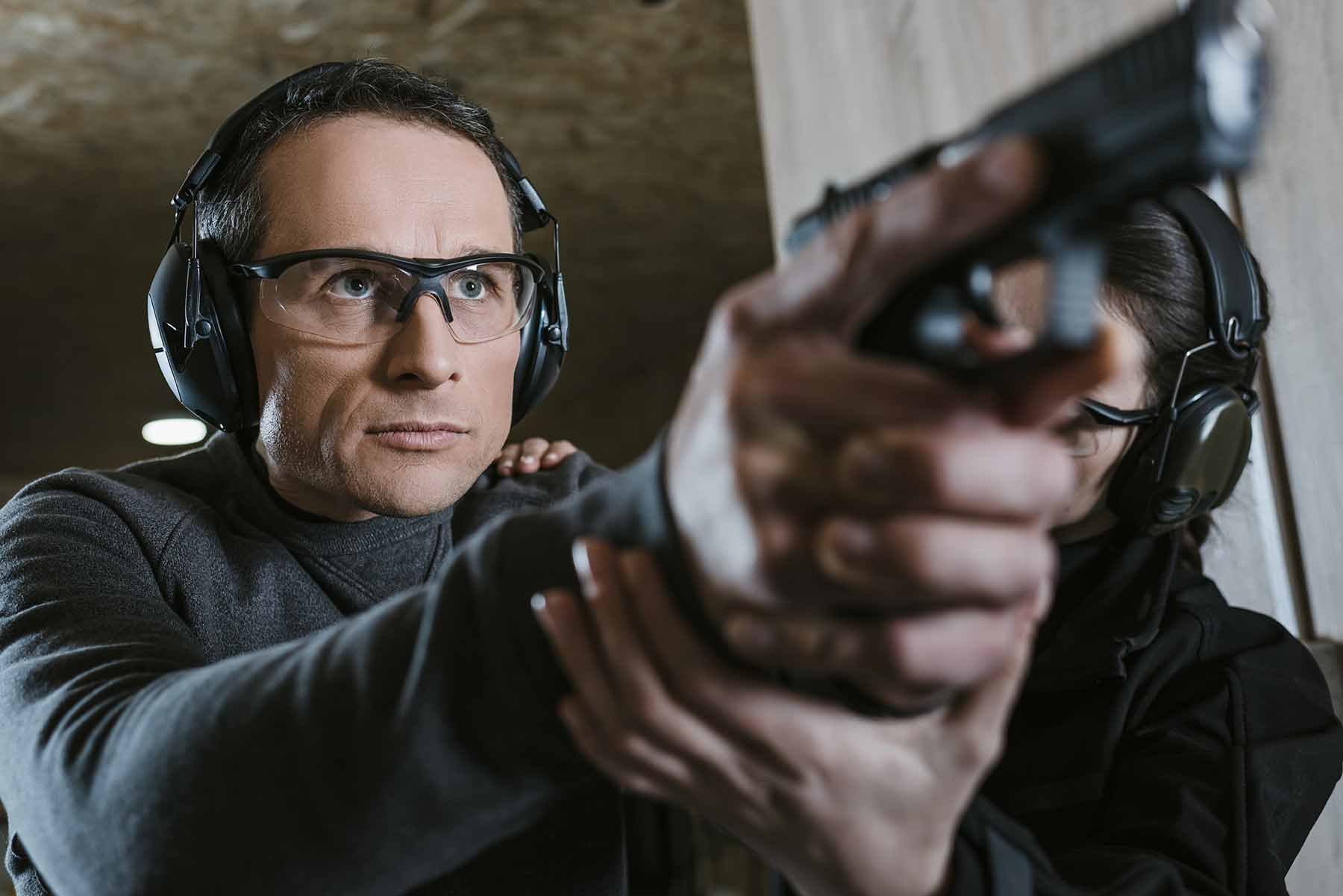Jun 25th 2024
A Beginner's Guide to Understanding Gun Calibers
A Beginner's Guide to Understanding Gun Calibers
Entering the world of firearms can be both exhilarating and overwhelming, especially for beginners. Among the myriad of terms and concepts, understanding gun calibers is fundamental to firearm ownership and use. This comprehensive guide will delve into the intricacies of gun calibers, from defining what they are to exploring their impact on firearm performance, ammunition selection, and shooting experience. By the end of this guide, beginners will have a solid understanding of gun calibers, empowering them to make informed decisions when choosing firearms and ammunition for their shooting pursuits.
What are Gun Calibers?
Gun calibers refer to the diameter of a firearm's bore or the bullet it fires. Typically expressed in inches or millimeters, this measurement determines various firearm performance aspects, including bullet size, recoil, muzzle velocity, and stopping power. Understanding gun calibers involves grasping the components contributing to this measurement, including bullet diameter, cartridge case dimensions, and overall cartridge length.
Fundamentals of Gun Calibers
Understanding the basics of gun calibers is essential for navigating the diverse world of firearms. In this section, we delve into the core concepts of bullet diameter, cartridge case dimensions, and muzzle velocity, laying the groundwork for comprehending the intricacies of different calibers and their applications.
Bullet Diameter
The bullet diameter, often called bullet caliber, represents the projectile's diameter. Bullets come in various diameters, ranging from small .22 caliber bullets commonly used in rimfire cartridges to larger bullets used in handguns, rifles, and shotguns. The bullet's diameter influences several factors, including weight, penetration, expansion, and terminal ballistics. Standard handgun calibers include .22 LR, 9mm, .40 S&W, and .45 ACP, while popular rifle calibers include .223 Remington, .308 Winchester, and .30-06 Springfield.
Cartridge Case Dimensions
Gun calibers are defined by the dimensions of the cartridge case, which houses the bullet, powder charge, and primer. Cartridge case dimensions include case length, rim diameter, and overall cartridge length. These dimensions vary depending on the specific cartridge and firearm chamber. Understanding cartridge case dimensions is essential for ensuring compatibility between ammunition and firearm.
Understanding Muzzle Velocity and Energy
Muzzle velocity and muzzle energy are critical factors that gun calibers influence. Muzzle velocity refers to the speed at which the bullet exits the firearm's muzzle, measured in feet per second (fps) or meters per second (m/s). It plays a significant role in determining bullet trajectory, accuracy, and terminal ballistics. Muzzle energy, on the other hand, is the kinetic energy of the bullet when leaving the muzzle, measured in foot pounds (ft-lbs) or joules (J). Muzzle energy is directly related to stopping power and penetration, with higher muzzle energy indicating a more significant potential for terminal performance.
Factors Affecting Caliber Selection
Selecting the correct caliber for your firearm involves considering various factors, including intended use, recoil characteristics, and legal considerations. This section explores the key factors influencing caliber selection, providing insights into choosing the most suitable caliber for your shooting needs and preferences.
Purpose and Intended Applications
When choosing a firearm caliber, consider its suitability for your specific needs, preferences, and intended applications. Factors to consider include the purpose of the firearm (e.g., target shooting, hunting, self-defense), recoil characteristics, availability and cost of ammunition, and legal considerations. Aligning the caliber with your shooting goals ensures a satisfying and practical shooting experience.
Handgun Calibers
Handguns come in many calibers, each offering unique characteristics and applications. Small calibers, such as .22 LR and .380 ACP, are commonly used for target shooting and concealed carry due to their low recoil and affordability. Medium calibers, including 9mm, .40 S&W, and .45 ACP, balance stopping power and manageable recoil, making them common self-defense and law enforcement choices. Magnum calibers, such as .357 Magnum and .44 Magnum, are known for their high power and are primarily used for hunting and personal defense against large game.
Rifle Calibers
Rifles are available in an extensive range of calibers, each tailored to specific shooting disciplines, hunting applications, and target distances. Standard rifle calibers include the .223 Remington, a versatile choice for target shooting and varmint hunting; the .308 Winchester, renowned for its accuracy and versatility in hunting medium to large game; and the .30-06 Springfield, a classic hunting caliber with a long-range trajectory and ample stopping power for big game. The selection of a rifle caliber depends on factors such as intended use, shooting distance, and personal preferences.
Shotgun Gauges
Unlike handguns and rifles, shotguns use a gauge system rather than calibers to designate the size of the shotgun bore. The most common shotgun gauge is the 12 gauge, followed by the 20 gauge and .410 bore. Gauge refers to the number of lead balls of the bore's diameter required to weigh one pound. Shotgun gauges determine the size of shotgun shells and their intended applications, with larger gauges delivering more power and smaller gauges offering lighter recoil.

Practical Gun Caliber Considerations and Applications
Beyond theoretical knowledge, practical considerations are vital in understanding gun calibers. From managing recoil to evaluating self-defense options, this section delves into the real-world implications of different calibers, helping shooters make informed decisions in diverse shooting scenarios.
Ballistics and Terminal Performance
Understanding the ballistics and terminal performance of different calibers is essential for evaluating their effectiveness in various shooting scenarios. External ballistics refers to the bullet's behavior in flight, influenced by factors such as muzzle velocity, bullet weight, and aerodynamics. Terminal ballistics, on the other hand, focuses on the bullet's behavior upon impact with the target, affecting penetration, expansion, and energy transfer. By understanding the ballistics and terminal performance of different calibers, shooters can make informed decisions when selecting ammunition for their firearms and assessing their effectiveness in real-world situations.
Understanding Recoil and Control
Recoil, the backward movement of a firearm upon firing, is crucial when selecting a caliber. Larger calibers typically generate more recoil due to increased muzzle energy, while smaller calibers produce less. Recoil affects shooter comfort, accuracy, and follow-up shot capability, making balancing caliber power and manageable recoil essential. Recoil control techniques, such as proper grip, stance, and firearm design features like recoil-reducing mechanisms, can help mitigate recoil effects and improve shooting performance.
Considerations for Self-Defense
For individuals considering firearms for self-defense purposes, caliber selection is particularly important. The chosen caliber should offer sufficient stopping power to incapacitate a threat effectively while minimizing overpenetration and collateral damage. Common self-defense calibers for handguns include 9mm, .40 S&W, and .45 ACP, offering a balance of stopping power, magazine capacity, and recoil control. Shotguns are also popular choices for home defense, with 12 gauge being the most common due to their versatility and availability of defensive ammunition options.
Specialized Calibers and Niche Applications
Specialized calibers exist for specific purposes or niche applications beyond conventional handgun, rifle, and shotgun calibers. These include wildcat cartridges, custom-designed calibers, and proprietary cartridges developed by firearms manufacturers. Specialized calibers may offer unique ballistic performance, improved accuracy, or compatibility with specific firearm platforms. While these calibers may cater to niche markets or enthusiasts, they highlight the versatility and innovation within the firearms industry.

Additional Gun Caliber Considerations and Community Engagement
Engaging with the firearms community and understanding broader considerations surrounding gun calibers enriches one's knowledge and fosters responsible firearm ownership. This section explores gun calibers' historical, legal, ethical, and economic aspects, emphasizing the importance of continuing education and community involvement in the firearms realm.
Continuing Education and Hands-On Experience
Finally, a beginner's understanding of gun calibers should be a starting point for ongoing learning and hands-on experience. As beginners gain more experience with firearms, they will better understand how different calibers perform in various shooting scenarios. Practical experience, combined with continued education through training courses, shooting competitions, and firearm forums, will further enhance a beginner's knowledge and proficiency with gun calibers, empowering them to make informed decisions and enjoy shooting sports safely and responsibly.
Historical Significance and Evolution
Exploring the historical context and evolution of gun calibers offers valuable insights into the development of firearms technology and its impact on military tactics, hunting practices, and civilian firearm ownership. Understanding how early black powder cartridges evolved into modern smokeless ones can provide a deeper appreciation for the engineering advancements shaping firearms over centuries. Historical firearms enthusiasts often delve into the origins of iconic calibers like the .45 Colt, .30-06 Springfield, and 7.62x39mm, tracing their lineage from military service to civilian use and their enduring legacy in firearms culture.
Legal and Regulatory Considerations
The ownership and use of firearms, including those chambered in specific calibers, are subject to various legal and regulatory frameworks worldwide. Different jurisdictions may restrict firearm ownership based on caliber, action type, barrel length, and magazine capacity. Gun owners and enthusiasts must familiarize themselves with local, state, and federal firearms laws to ensure compliance and responsible firearm ownership. Additionally, international travelers should be aware of firearm import/export regulations governing the transport of firearms and ammunition across borders.
Environmental and Ethical Impact
The environmental and ethical implications of firearm use, including the choice of caliber and ammunition type, are increasingly relevant considerations for shooters and hunters. Sustainable hunting practices emphasize ethical shot placement, quick and humane kills, and responsible firearm selection to minimize animal suffering and promote conservation efforts. Additionally, environmentally conscious shooters may opt for lead-free ammunition alternatives to reduce environmental contamination and mitigate the risks of lead exposure to wildlife and ecosystems.
Economic Factors and Affordability
The cost of ammunition and firearm accessories can vary significantly based on caliber popularity, availability, and manufacturing processes. If applicable, beginners should consider the long-term affordability of their chosen caliber, factoring in the cost of practice ammunition, defensive ammunition, and reloading components. While some calibers may offer budget-friendly options for target shooting or plinking, others may have higher upfront costs but provide superior performance or versatility. Understanding the economic factors associated with different calibers can help shooters make informed purchasing decisions and manage their shooting expenses effectively.
Community Engagement and Networking
Engaging with the firearms community through local shooting clubs, online forums, and social media groups offers valuable opportunities for networking, knowledge sharing, and mentorship. Beginners can benefit from connecting with experienced shooters, instructors, and industry professionals who can guide caliber selection, firearm maintenance, and training resources. Building a supportive network within the firearms community fosters camaraderie, enhances the learning experience, and promotes responsible gun ownership practices, ensuring that beginners feel welcomed and supported as they embark on their journey into the world of firearms.
Mastering Gun Calibers for Confident Firearm Decisions
Gun calibers are a fundamental aspect of firearm ownership and use, influencing everything from firearm selection and performance to ammunition selection and shooting experience. By understanding the basics of gun calibers, beginners can confidently navigate the world of firearms, making informed decisions when choosing firearms and ammunition for their shooting pursuits. Whether for target shooting, hunting, self-defense, or competitive shooting, selecting the right caliber is essential for achieving desired results and ensuring safety and effectiveness on the range or in the field.
For more in-depth articles, expert tips, and comprehensive guides on firearms and shooting techniques, visit our Gunline Shooting blog.

